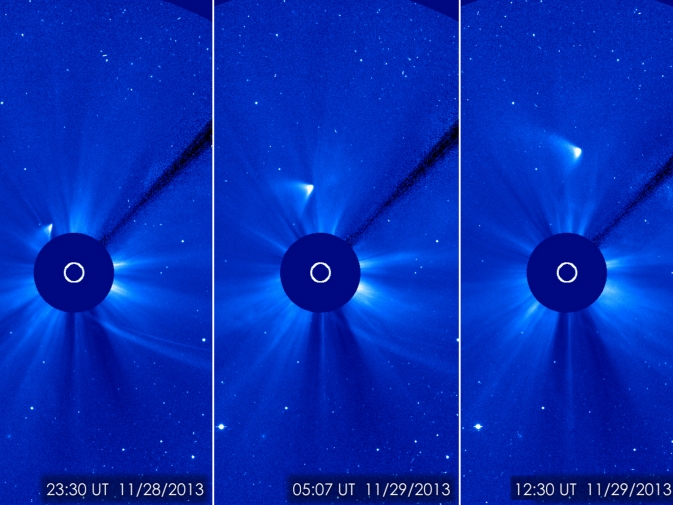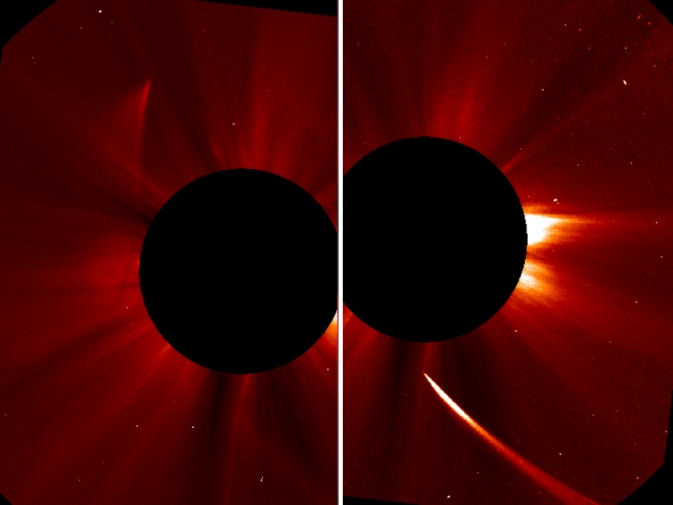November 30, 2013
Comment: ISON proved to be a zombie comet because it carried such a great mass but has now only just survived as a shadow of its former self.
RELATED: ISON After Perihelion: The Undead Maybe Somewhat Ex-Comet

This movie shows Comet ISON orbiting around the sun –
represented by the white circle — on Nov. 28, 2013. ISON looks smaller as it
streams away, but scientists believe its nucleus may still be intact. The video
covers Nov. 27, 2013, 3:30 p.m. EST to Nov. 29, 2013, 8:30 a.m. EST. / Image
Credit: ESA/NASA/SOHO/Jhelioviewer

Three view of what’s left of Comet ISON rounding the
sun.
ISON appears as a white smear heading up and away from the sun. ISON was not visible during its closest approach to the sun, so many scientists thought it had disintegrated, but images like this one from the ESA/NASA Solar and Heliospheric Observatory suggest that a small nucleus may be intact. / Image Credit: ESA/NASA/SOHO/GSFC
ISON appears as a white smear heading up and away from the sun. ISON was not visible during its closest approach to the sun, so many scientists thought it had disintegrated, but images like this one from the ESA/NASA Solar and Heliospheric Observatory suggest that a small nucleus may be intact. / Image Credit: ESA/NASA/SOHO/GSFC
Continuing a history of surprising behavior, material from Comet ISON appeared on the other side of the sun on the evening on Nov. 28, 2013, despite not having been seen in observations during its closest approach to the sun.
As ISON appeared to dim and fizzle in several observatories and later could not be seen at all by NASA’s Solar Dynamics Observatory or by ground based solar observatories, many scientists believed it had disintegrated completely. However, a streak of bright material streaming away from the sun appeared in the European Space Agency and NASA’s Solar and Heliospheric Observatory later in the evening. The question remains whether it is merely debris from the comet, or if some portion of the comet’s nucleus survived, but late-night analysis from scientists with NASA’s Comet ISON Observing Campaign suggest that there is at least a small nucleus intact.

Another view from SOHO’s C2 chronograph shows Comet
ISON appearing bright as it streams toward the sun (right). it can be seen as a
dim streak heading upward and out in the left image. The comet may still be
intact. / Image Credit: ESA/NASA/SOHO/Jhelioviewer
Throughout the year that researchers have watched Comet ISON – and especially during its final approach to the sun – the comet brightened and dimmed in unexpected ways. Such brightness changes usually occur in response to material boiling off the comet, and different material will do so at different temperatures thus providing clues as to what the comet is made of. Analyzing this pattern will help scientists understand the composition of ISON, which contains material assembled during the very formation of the solar system some 4.5 billion years ago.



No comments:
Post a Comment